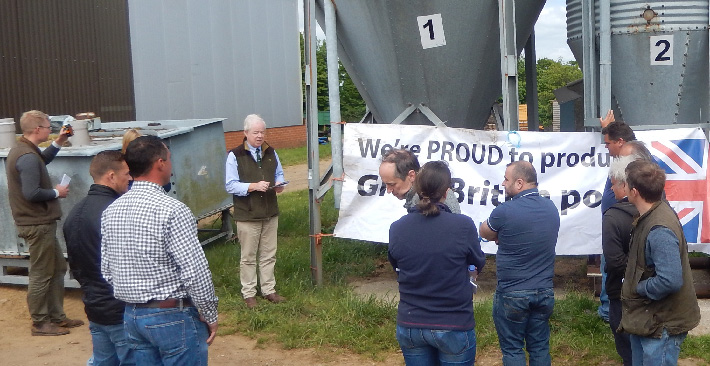News that spot quotes had broken the 140p/kg barrier in places were a further indication of the strength of the ongoing recovery of UK pig prices from the dark days earlier this year, when spot was traded at little more than 100p/kg – and in some cases less for one off “salvage loads” – and the whole global pig market has undergone a remarkable about turn.
Although the SPP remains slow to move, it’s still steadily edging its way up, adding a further 2.14p this week to stand at 130.20p. Weekly contribution prices are well ahead of this, with a wide range between 130p and 140p/kg.
Spot bacon was traded today at about the 140p/kg mark according to spec, and the universal picture seems to be of prices moving up due to a combination of rising demand – in particular from China – and reducing supplies following the heavy culling that has taken place throughout much of Europe and beyond in the past 12 months or so.
Cull sow prices also added a modest penny, and were generally quoted between 75p to 78p/kg but, with numbers of the tighter side, demand could well move ahead in the next few weeks.
A slight weakening of the pound was reflected in a marginal improvement in the value of the euro, which traded on Friday worth 84.57p compared with 83.94p a week ago. This has benefited the UK import/export balance, but European prices have tended to stay at similar levels with Germany standing on at 1.66 euros/kg for the third week running but. In our money, this is equivalent to 140.27p/kg, and higher than most UK pigmeat producers’ prices!
The weaner market continues to reflect a shortage of pigs in the system with prices pushing ahead, albeit slowly as most contract weaner prices are linked to the slow moving SPP, but like an elderly person “will get there in the end”.
The latest AHDB 30kg ex-farm average has improved to £43.15/head and 7kg £31.66/head and, in both cases, spot trades are now being reported at, in some cases, £2 to £4/head above this.
The grain market is still continuing to paint a relatively settled picture as far as pig producers are concerned, with November feed wheat quoted at £125/t and May 2017 looking significantly more expensive at £130.25/t.
Although EU grain yields have improved, quality remains in question and the same applies to the recently harvested barley crop, which could see more volumes available for the feed market rather than malting and milling.
And finally, just to underline the importance of export markets to the pig industry as a whole, in the first five months of the year EU pork exports to outside the community increased by 40% in volume and 33% in value on a year-by-year comparison as well as a 29% increase in lard, fat and offal exports with exports to China increasing by 106% in volume and 123% in value compared with a year ago. Ah so!
The next Chinese year of the pig doesn’t occur until 2019, followed by the year of the rat, which, I hope, isn’t an omen. And, in case you wondered, 2016 is the year of the monkey!




